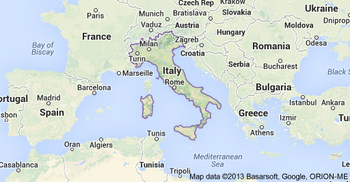Dniester
| Author:Laxman Burdak, IFS (Retd.) |

Dniester River (नीस्टर नदी) is a river in Eastern Europe. It was named by the Scythian Jats.
Location
It runs first through Ukraine and then through Moldova (where it separates the breakaway territory of Transnistria), finally discharging into the Black Sea on Ukrainian territory again.
Names
The name Dniester derives from Sarmatian dānu nazdya "the close river."[1] The Dnieper, also of Sarmatian origin, derives from the opposite meaning, "the river on the far side". Alternatively, according to V. Abaev Dniester would be a blend of Scythian dānu "river" and Thracian Ister, the previous name of the river, literally Dān-Ister (River Ister).[2] The Ancient Greek name of Dniester, Tyras (Τύρας), is from Scythian tūra, meaning "rapid."
The names of the Don and Danube are also from the same Proto Indo-European word *dānu - river.
In Russian, it is known as Днестр, translit. Dnestr, in Yiddish: Nester נעסטער; in Turkish, Turla and during antiquity, it was called Tyras in Latin and Danastris in Greek. Classical authors have also referred to it as Danaster. These early forms, without -i- but with -a-, contradict Abaev's hypothesis.
Edward Gibbon refers to the river both as the Niester and Dniester in his History of the Decline and Fall of the Roman Empire.[3]
History
During the prehistoric Neolithic Era, the Dniester River was the centre of one of the most advanced civilizations on earth at the time. The Cucuteni-Trypillian culture fluourished in this area from roughly 5300 to 2600 B.C., leaving behind thousands of archeological sites. Their settlements had up to 15,000 inhabitants, making them the first large farming communities in the world, long before Mesopotamian cities.[4]
In antiquity, the river was considered one of the principal rivers of European Sarmatia, and it was mentioned by many Classical geographers and historians. According to Herodotus (iv. 51) it rose in a large lake, whilst Ptolemy[5] places its sources in Mount Carpates (the modern Carpathian Mountains), and Strabo (ii.) says that they are unknown. It ran in an easterly direction parallel with the Ister (lower Danube), and formed part of the boundary between Dacia and Sarmatia. It fell into the Pontus Euxinus to the northeast of the mouth of the Ister; the distance between them being, according to Strabo, 900 stadia (Strabo. vii.), and, according to Pliny,[iv. 12. s. 26] 210 km (from the Pseudostoma). Scymnus (Fr. 51) describes it as of easy navigation, and abounding in fish. Ovid (ex Pont.)[iv. 10. 50] speaks of its rapid course.
Greek authors referred to the river as Tyras (Greek: ό Τύρας.[10] At a later period it obtained the name of Danastris or Danastus,[6] whence its modern name of Dniester (Neister), though the Turks still called it Turla during the 19th century.[7] The form Τύρις is sometimes found.[8] Σκύφαι and Ποσειδώνιος.)
From the 14th century to 1812, part of the Dniester formed the eastern boundary of the Principality of Moldavia.
Jat History
Pliny the Elder in his Naturalis Historia mentions[9] a tribe called the Tyragetae, apparently a Daco-Thracian tribe who dwelt by the river Tyras (the Dniester). Their tribal name appears to be a combination of Tyras and Getae (=Jat).
Getae of Greek language is used for Jats.[10]
References
- ↑ Mallory, J.P. and Victor H. Mair. The Tarim Mummies: Ancient China and the Mystery of the Earliest Peoples from the West. London: Thames & Hudson, 2000. p. 106
- ↑ Абаев В. И. Осетинский язык и фольклор (Ossetian language and folklore). Moscow: Publishing house of Soviet Academy of Sciences, 1949. P. 236
- ↑ Edward Gibbons Decline and Fall of the Roman Empire Vol 1 chapt 11
- ↑ MIkhail Widejko. "Trypillya Culture Proto-Cities: History of Discovery and Investigations © M. Yu. Videiko Published: Відейко М. Ю. Трипільські протоміста. Історія досліджень. Київ, 2002; с.103–125: (Videiko M. Yu. Trypillya culture proto-cities. History of investigations. Kiev,2002, p.103–125)". Iananu.kiev.ua.
- ↑ iii. 5. § 17, 8. § 1, &c.
- ↑ Amm. Marc. xxxi. 3. § 3; Jornand. Get. 5; Const. Porphyr. de Adm. Imp. 8
- ↑ Herod. iv. 11, 47, 82; Scylax, p. 29; Strab. i. p. 14; Mela, ii. 1, etc.; also Schaffarik, Slav. Alterth. i. p. 505
- ↑ Stephanus of Byzantiump. 671; Suid. s. v.
- ↑ Pliny the Elder: The Natural History. John Bostock, M.D., F.R.S., H.T. Riley, Esq., B.A., Ed.
- ↑ Dr Mahendra Singh Arya etc, : Ādhunik Jat Itihas, Agra 1998 p. 237

